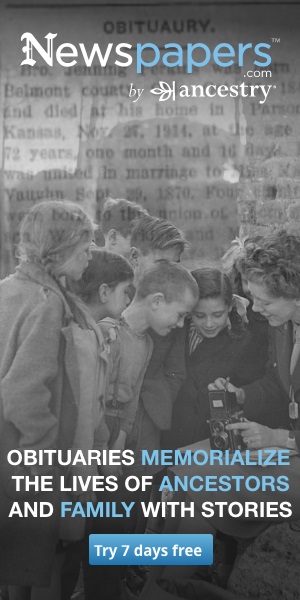U.S., Social Security Death Index, 1935-2014
Telfair Lady "Undertakers" Didn't Make Shrouds For Civil War's Shepherdstown
Many Burials Lacked Death Garments and Dignity
This article is compiled by Julian Williams.
Some writer from years gone by said that the ladies of Telfair County around the time of the Civil War were known far and wide for their excellence in the making of home products. In addition to rugs, bed covers, oak baskets, candles, and soap, these ladies were highly skilled and took great pride in turning out the finest high-quality cloth in the region. This premium cloth of the Telfair women was of such outstanding quality that it was in demand at Hawkinsville, a main trading center, well into post-Civil War days.
And, interestingly, one item some of these ladies excelled in was the making of shrouds - death garments. Not only did the death garments have to be skillfully sewn - they had to be made of new material - it was a longstanding custom of the Telfair tradition.
Even at the turn of the century someone remarked that no other person ever fixed and helped lay out more dead people than her mother. Women had to serve in many roles in the old days.
Sadly, these nimble fingers and compassionate hearts could not get this product to the boys from home who lay still and cold on the battlefield at Antietam and those who were laid to rest at Shepherdstown, five miles from Antietam.
Thousands, from both sides, had died or were dying from wounds, disease, exhaustion, and probably broken hearts and spirits. Some were lucky enough to dodge the black whisper of death and lived to tell about it. General John B. Gordon, a Georgian who returned to his state to serve as governor and senator, had a shot to the head that put a hole in his cap but he kept going. Later, another shot hit him in the head and he fell, bleeding profusely. His face wound up in his cap and he would have drowned in his own blood had it not been for the hole in his cap made by the first bullet! The blood drained out through the hole and he recovered.
You can imagine what a time it was. Part of the army was trying to bury the dead. Part of the army was retreating toward Shepherdstown. Many were being cared for, as best as could be, for the wounds received in the battle. Even little Dunkard Church, on the Antietam battlefield, had been used as a hospital for Confederate wounded. The Dunkers were great people. They tried to help the wounded of both sides. These German Baptist Brethren really emphasized baptism of the believer - so much that they completely immersed the believer three times in running water. That's how they came to be known as "Dunkers." Unfortunately, it would be a while before they could use Antietam Creek for that purpose again because there on that horrible day of September 17, 1862, there had been a baptism of blood of great magnitude.
The few caskets available were usually used only for the Federal dead. Most of the Confederate dead were buried without the benefit of this accommodation. But it was fortunate for any soldier to receive any kind of burial - many were left to the elements or buried so shallow they reappeared in the course of time. Some were fortunate enough to be reburied in cemeteries. At Antietam, over 700 Federal soldiers were buried in a field behind a man's house. Many Confederates were buried in mass graves, still in their battlefield uniforms. For survivors, fatigue, depression, and a longing for home prompted feelings that brought about thoughts such as these:
"I am awful tiered (tired) of the ware (war). I wish it would end but I see no sine (sign) of peas (peace) still I hope to live to see the day when I can come home and stay at home in pease (peace) and there spend the remnent (remnant) of my days with my family and friends."
From the time of the Battle of Shepherdstown Ford, VA (now West Virginia) (September 19, 1862) to the Battle of Fredericksburg, VA (December 13, 1862), the Telfair Co. B, Georgia 49th, had the following casualties:
Washington Powell, Captured, near Charleston, SC, October 16, 1862. Note: this might have been Charles Town, VA, unless he had been separated from his unit for some reason.
Bennett J. Walker, Died, Disease, Danville, VA, October 26, 1862.
William R. Grace, Died, Pneumonia, VA, October 30, 1862. Buried in Confederate Cemetery at Lynchburg, VA.
Angus McDuffie, Died, Calculus, Staunton, VA, hospital, November 5, 1862. Buried there in Thornrose Cemetery.
Note: The following Telfair Co. B, Ga. 49th, soldier (casualty) was inadvertently left off an earlier list:
Lovett Pickerson (or Pickerett), Died, Fever, Richmond, VA, April 29, 1862.
It would be a long time until the Jacksonville boys could come home to spend "the remnant of their days" with family and friends - if they came home at all.
Feeling the soil so red,
Blushing with flesh that bled,
Groaning for shoots a' growing,
Moaning for souls a' going,
Under the sod and the dew,
Waiting the judgment-day;
Patient and breathless, the Blue,
Patient and lifeless, the Gray.
Antietam had taken a great toll on North and South but the South was reeling because of smaller numbers in the field. They could not afford to lose more men. The Federals pursued them to Shepherdstown Ford but were turned back again by General A.P. Hill whose unit included the Telfairians. Fate would not allow truce, treaty, victory, defeat, or negotiated peace. The war would go on and the Rebel must once again turn his longing eyes from the horizon which hovered over home. There would be more war. And next it would be Fredericksburg. And it was not getting any better. And it was getting cold.


